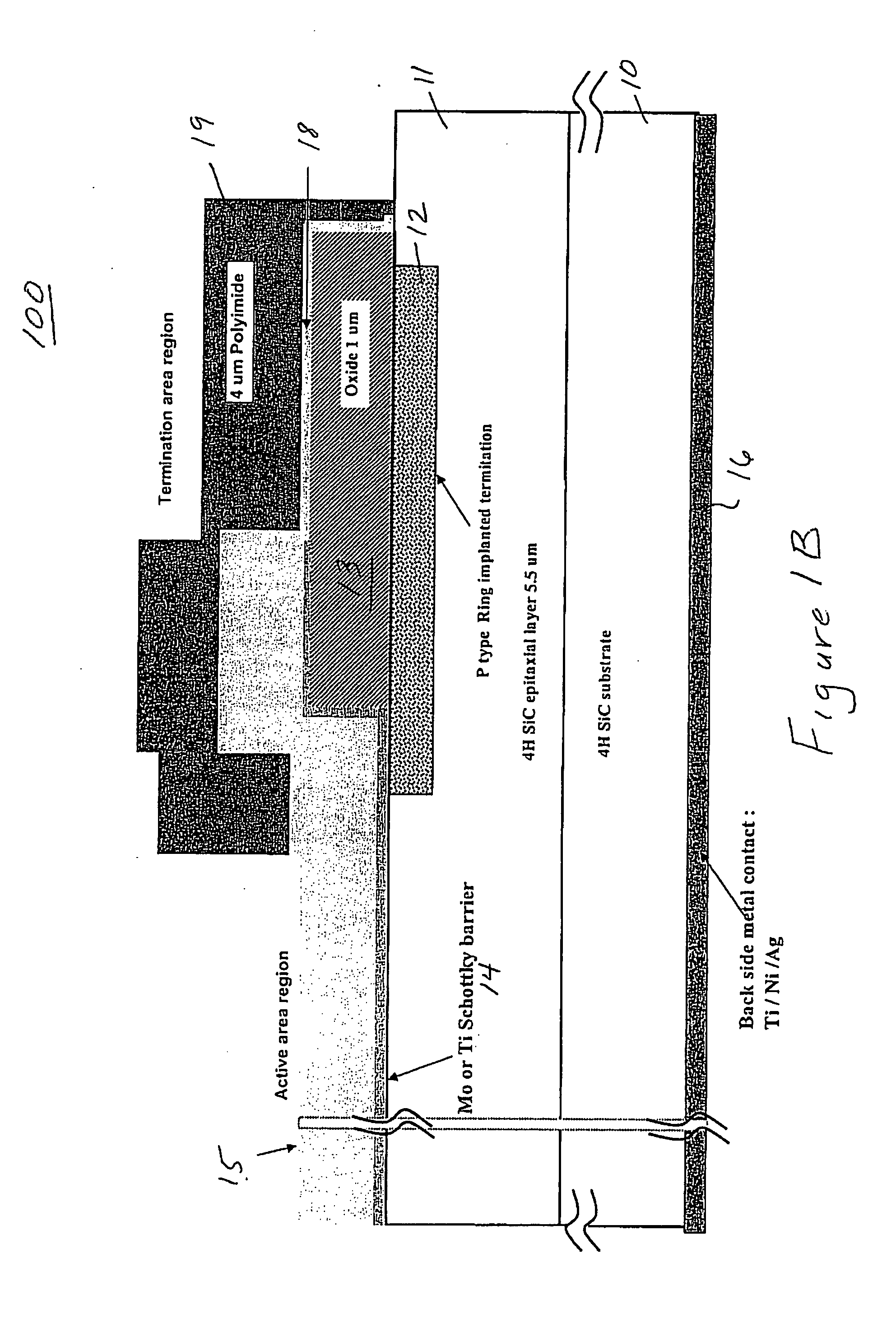Molybdenum barrier metal for SiC Schottky diode and process of manufacture
a technology of molybdenum barrier and sic, which is applied in the direction of basic electric elements, electrical apparatus, and devices with poor comparison performance, can solve the problems of performance degradation defects in the sic epilayer of high-voltage versions, currently available sic-sbds that do not fully realize the high performance potential of sic, and achieve better forward conduction performance, reduce the height barrier value, and limit the effect of electric field strength
- Summary
- Abstract
- Description
- Claims
- Application Information
AI Technical Summary
Benefits of technology
Problems solved by technology
Method used
Image
Examples
Embodiment Construction
[0024]The present invention will now be described in detail with reference to a various embodiments thereof as illustrated in the accompanying drawings. In the following description, specific details are set forth in order to provide a thorough understanding of the present invention. It will be apparent, however, to one skilled in the art, that the present invention may be practiced without using some of the implementation details set forth herein. It should also be understood that well known operations have not been described in detail in order to not unnecessarily obscure the present invention.
Molybdenum Barrier Metal for SiC Schottky Diode and Process of Manufacture According to One Embodiment of the Present Invention
[0025]FIG. 1A shows a cross-section of a silicon carbide (SiC) Schottky barrier diode (SBD) 100 fabricated according to one embodiment of the invention. In one embodiment, a molybdenum (Mo) Schottky contact is used that provides an improvement, as compared to tita...
PUM
 Login to View More
Login to View More Abstract
Description
Claims
Application Information
 Login to View More
Login to View More - R&D
- Intellectual Property
- Life Sciences
- Materials
- Tech Scout
- Unparalleled Data Quality
- Higher Quality Content
- 60% Fewer Hallucinations
Browse by: Latest US Patents, China's latest patents, Technical Efficacy Thesaurus, Application Domain, Technology Topic, Popular Technical Reports.
© 2025 PatSnap. All rights reserved.Legal|Privacy policy|Modern Slavery Act Transparency Statement|Sitemap|About US| Contact US: help@patsnap.com



